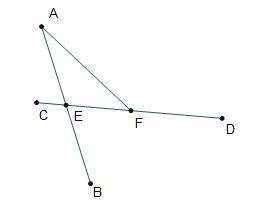
Mathematics, 29.08.2020 21:01 raiindrxp
Is the following situation an example of an observational study, an experiment, or a survey? Explain your answer and provide specific details from the situation that help you to determine which is correct. ~~ A group of eight people work on the fifth floor of the Peyton Building. They all decide they want to lose weight by getting more exercise. Four of them decide to walk up the four flights of stairs each morning. The other four decide to walk down the four flights of stairs at the end of the day. They weigh themselves each Friday morning and compare.

Answers: 1
Another question on Mathematics

Mathematics, 21.06.2019 22:30
Which answer goes into the box? (90° clockwise rotation, 90° counter clockwise rotation, translation, or glide reflection)
Answers: 2

Mathematics, 22.06.2019 03:10
Aregular hexagonal pyramid has a base area of 45 in2 and a lateral area of 135in 2. what is the surface are are of the regular hexagonal pyramid
Answers: 2

Mathematics, 22.06.2019 07:10
For a particular set of atmospheric conditions, the function y z 349 models the frequency, y, in waves per second, of sound waves with a wavelength of y meters a note played on a guitar has a frequency of 440 waves per second. to the nearest centimeter what is the wavelength of the note? centimeters
Answers: 2

Mathematics, 22.06.2019 07:30
N=1,2,3,4,5 a n= 9,18,36,72,144 a recursive rule for the sequence is: f(1)= and f(n)= for n≥2. an explicit rule for the sequence is: f(n)= find a recursive rule and an explicit for the geometric sequence. 768,192,48,12,3,… a recursive rule for the sequence is: f(1)= and f(n)= for n≥2. an explicit rule for the sequence is: f(n)=∙ -1. concept 3: deriving the general forms of geometric sequence rules your turn use the geometric sequence to find a recursive rule and an explicit rule for any geometric sequence. 4,8,16,32,64,… recursive rule for the geometric sequence: f(1)= and f(n)=f(n-1)∙ for n≥2. recursive rule for any geometric sequence: given f(1),f(n)=f(n-1)∙ for n≥2. explicit rule for the geometric sequence: f(n)=∙-1. explicit rule for any geometric sequence: f(n)=∙-1 concept 4: constructing a geometric sequence given two terms your turn find an explicit rule for the sequence using subscript notation. the third term of a geometric sequence is 1/48 and the fifth term of the sequence is 1/432. all the terms of the sequence are positive. the explicit rule for the geometric sequence is
Answers: 2
You know the right answer?
Is the following situation an example of an observational study, an experiment, or a survey? Explain...
Questions

Physics, 23.02.2021 14:00

English, 23.02.2021 14:00


English, 23.02.2021 14:00


Mathematics, 23.02.2021 14:00

Mathematics, 23.02.2021 14:00

Mathematics, 23.02.2021 14:00

Mathematics, 23.02.2021 14:00

Mathematics, 23.02.2021 14:00

Mathematics, 23.02.2021 14:00


Computers and Technology, 23.02.2021 14:00


Mathematics, 23.02.2021 14:00

Computers and Technology, 23.02.2021 14:00


Physics, 23.02.2021 14:00


Social Studies, 23.02.2021 14:00




